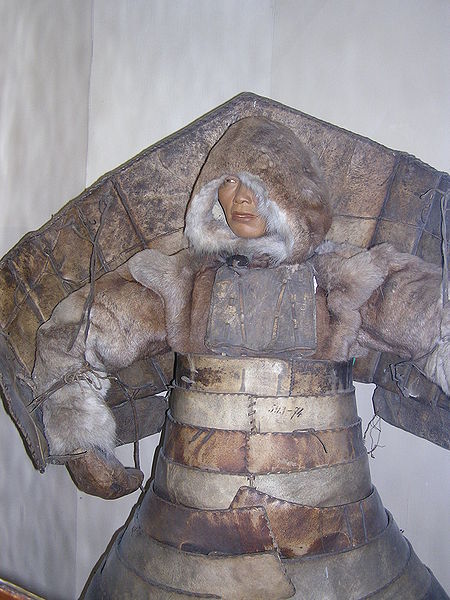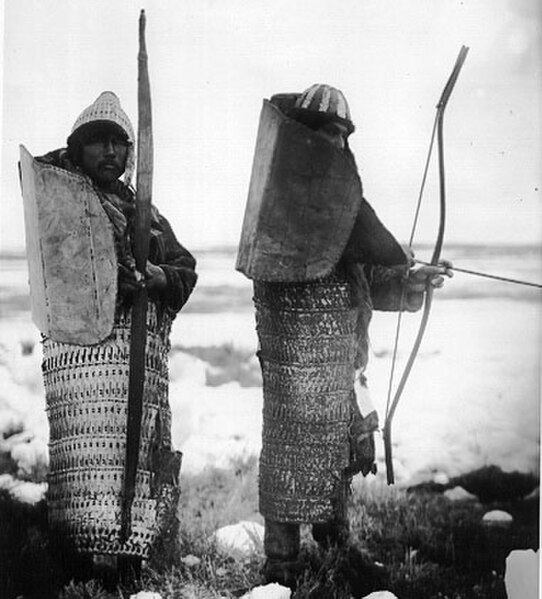Russian conquest of Siberia
The Russian conquest of Siberia took place during 1580–1778, when the Khanate of Sibir became a loose political structure of vassalages that were being undermined by the activities of Russian explorers. Although outnumbered, the Russians pressured the various family-based tribes into changing their loyalties and establishing distant forts from which they conducted raids. It is traditionally considered that Yermak Timofeyevich's campaign against the Siberian Khanate began in 1580. The annexation of Siberia and the Far East to Russia was resisted by local residents and took place against the backdrop of fierce battles between the Indigenous peoples of Siberia and the Russian Cossacks, who often committed atrocities against Indigenous Siberians.
Yermak's Conquest of Siberia, a painting by Vasily Surikov
Muscovite voevodas in the new-built fortress of Tyumen, from the Remezov Chronicle.
Laminar armour from hardened leather reinforced by wood and bones such as this was worn by native Siberians
Lamellar armour traditionally worn by the Koryak people (circa 1900)
The Khanate of Sibir was a Siberian Tatar Khanate in western Siberia, founded at the end of the 15th century, following the break-up of the Golden Horde. Throughout its history, members of the Shaybanid and Taibugid dynasties often contested the rulership over the Khanate between each other; both of these competing tribes were direct patrilineal descendants of Genghis Khan through his eldest son Jochi and Jochi's fifth son Shayban (Shiban). The area of the Khanate had once formed an integral part of the Mongol Empire, and later came under the control of the White Horde and the Golden Horde of 1242–1502.
The fall of Qishlaq to Yermak, and the flight of Kuchum. A miniature from the Kungur Chronicle





